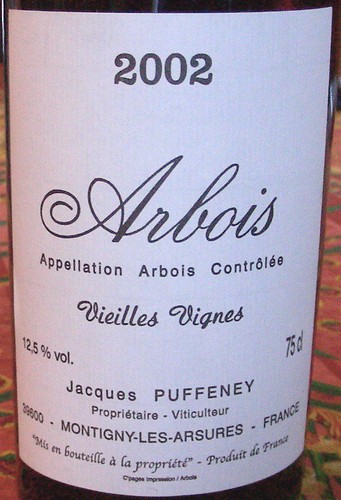
The village of Arbois
If you had the chance to read Edward Behr's well documented coverage of the wines of Jura in the last issue of The Art of Eating, you must be now fairly well acquainted with the region. It is a mountainous massif between Burgundy and Switzerland with Arbois being one of the main communes and appellations. Arbois, which means fertile soil in celtic, is also the childhood home to Louis Pasteur, sometimes called the father of oenology.
 The appellation produces a wide variety of wines including red, rosé, and white wines, sparkling wines, sweet vins de pailles and of course the distinctive vins jaunes. The red wines are usually blends of Pinot Noir, Poulsard, and Trousseau. Pinot Noir produces a much lighter wine than in Burgundy and is mostly used for blending. Poulsart is a thin skinned grape native to the Jura producing delicate, lightly-colored wines. Trousseau is more robust and brings color and structure to the traditional Trousseau-Poulsard or Trousseau-Poulsard-Pinot Noir blends. It is also found in Portugal under the name of Bastardo where it is used for Port.
The appellation produces a wide variety of wines including red, rosé, and white wines, sparkling wines, sweet vins de pailles and of course the distinctive vins jaunes. The red wines are usually blends of Pinot Noir, Poulsard, and Trousseau. Pinot Noir produces a much lighter wine than in Burgundy and is mostly used for blending. Poulsart is a thin skinned grape native to the Jura producing delicate, lightly-colored wines. Trousseau is more robust and brings color and structure to the traditional Trousseau-Poulsard or Trousseau-Poulsard-Pinot Noir blends. It is also found in Portugal under the name of Bastardo where it is used for Port.The 2002 Arbois Rouge Vieilles Vignes Jacques Puffeney had a pale red color. I found the nose very distinctive with notes of tart cherry, dried flowers and spices. On the palate, it was dry, refreshing, almost like a rosé, and certainly, incredibly light.
Technorati tags: wine food & drink
No comments:
Post a Comment